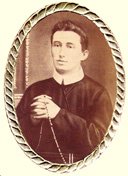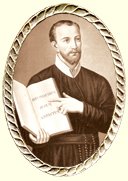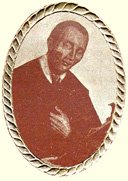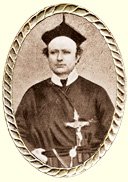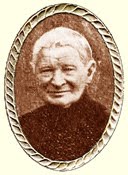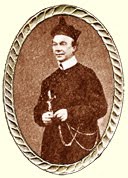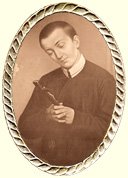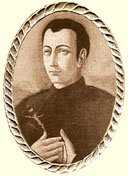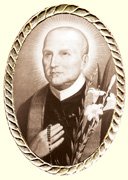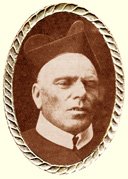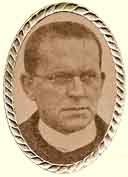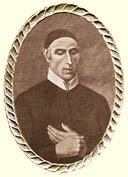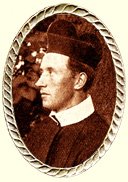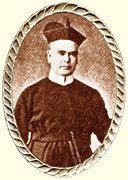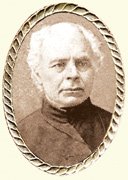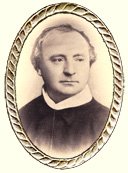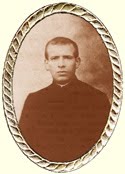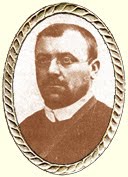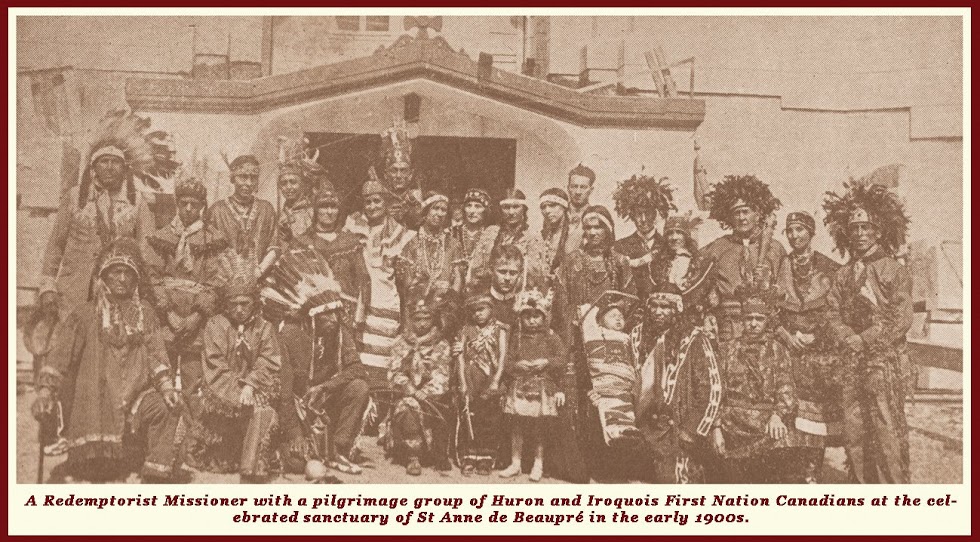Wilhelmus Marinus Cardinal van Rossum, C.SS.R. (1854-1932)
 Cardinal van Rossum was born on 3 September (some sources say October), 1854, at Zwolle, in the Archdiocese of Utrecht, Holland, the son of Jan van Rossum and Hendrika Veldwillems. His first name is also written as Willem or often in French as Guillaume. He entered the Minor Seminary of Culemborg in 1867 and six years later, on 15 June 1873, he entered the Congregation of the Most Holy Redeemer. He was professed on 16 June, 1874 at the Monastery of s'Hertogenbosch and ordained on 17 October, 1879, at the Redemptorist Monastery of Wittem. At first, in 1880, he was professor of Latin and Rhetoric in the Juvenate of Roermond, then professor of Dogmatic Theology at the Scholasticate of Wittem from 1883-1892, and later prefect of studies from 1886-1893. From 1893-1895 he was rector of that monastery.
Cardinal van Rossum was born on 3 September (some sources say October), 1854, at Zwolle, in the Archdiocese of Utrecht, Holland, the son of Jan van Rossum and Hendrika Veldwillems. His first name is also written as Willem or often in French as Guillaume. He entered the Minor Seminary of Culemborg in 1867 and six years later, on 15 June 1873, he entered the Congregation of the Most Holy Redeemer. He was professed on 16 June, 1874 at the Monastery of s'Hertogenbosch and ordained on 17 October, 1879, at the Redemptorist Monastery of Wittem. At first, in 1880, he was professor of Latin and Rhetoric in the Juvenate of Roermond, then professor of Dogmatic Theology at the Scholasticate of Wittem from 1883-1892, and later prefect of studies from 1886-1893. From 1893-1895 he was rector of that monastery.From 1895-1911 he resided at the Redemptorist Monastery in Rome, becoming Consultor to the Holy Office in December,1900, counsellor to the newly formed Commission for the Codification of Canon Law in 1904 and General Consultor of the Redemptorist Congregation under the Most Rev. Fr Patrick Murray from 1909-1911. In Rome he grew to be much appreciated by Pope St Pius X. He was created Cardinal Deacon, while remaining a simple priest, in the consistory of 27 November, 1911, by St Pius X, the news reaching him at Riedisheim where he was staying.
 He received the red hat and the deaconry of S. Cesareo in Palatio on 30 November, 1911, becoming the first Dutch Cardinal since the Protestant Reformation. He served as Papal Legate to the International Eucharistic Congress in Vienna, Austria, and was decorated with the Grand Cross of the Austrian Order of Sankt Stefan, in 1912. On 13 January, 1914, he became President of Pontifical Biblical Commission, Cardinal van Rossum participated in the conclave of 1914, which elected Pope Benedict XV. Becoming Grand Penitentiary, on 1 October, 1915, in place of the deceased Cardinal Serafino Vannutelli, he was admitted into the order of Cardinal Priests under the title of S. Croce in Gerusalemme (one of the principal basilicas of Rome), on 6 December, 1915. He also served as a member of the Pontifical Commission for the Authentic Interpretation of the Code of Canon Law and finally became Prefect of the Sacred Congregation for the Propaganda Fidei, on 12 March, 1918, a post which he filled until his death and where he exercised an important influence on Papal policies for the Missions. It is certain that the prodigious development of the Foreign Missions from that year has a direct bearing on his appointment.
He received the red hat and the deaconry of S. Cesareo in Palatio on 30 November, 1911, becoming the first Dutch Cardinal since the Protestant Reformation. He served as Papal Legate to the International Eucharistic Congress in Vienna, Austria, and was decorated with the Grand Cross of the Austrian Order of Sankt Stefan, in 1912. On 13 January, 1914, he became President of Pontifical Biblical Commission, Cardinal van Rossum participated in the conclave of 1914, which elected Pope Benedict XV. Becoming Grand Penitentiary, on 1 October, 1915, in place of the deceased Cardinal Serafino Vannutelli, he was admitted into the order of Cardinal Priests under the title of S. Croce in Gerusalemme (one of the principal basilicas of Rome), on 6 December, 1915. He also served as a member of the Pontifical Commission for the Authentic Interpretation of the Code of Canon Law and finally became Prefect of the Sacred Congregation for the Propaganda Fidei, on 12 March, 1918, a post which he filled until his death and where he exercised an important influence on Papal policies for the Missions. It is certain that the prodigious development of the Foreign Missions from that year has a direct bearing on his appointment.He was elected Titular Archbishop of Cesarea in Mauretania, on 25 April, 1918, and consecrated on 19 May, 1918, in the Sistine Chapel, by Pope Benedict XV, assisted by Giovanni Battista Nasalli Rocca di Corneliano, titular archbishop of Tebe, privy almoner of His Holiness, and by Agostino Zampini, O.S.A., titular bishop of Porfireone, sacristan of His Holiness. Cardinal van Rossum participated in the conclave of 1922, which elected Pope Pius XI. He is the author of numerous works on Moral Theology and Canon Law. He was also the Cardinal Protector of the Order of Redemptoristine Nuns, the Sisters of Niederbronn, the Sisters of Ingenbohl and numerous other Congregations.
 Despite his age he remained always an indefatigable worker. He undertook all with a charming modesty, which willingly left honours to his collaborators. As Prefect of the Propaganda he inherited an immense workload. 444 diocese or vicariates spread around the world fell under his jurisdiction. 282 missionary bishops, 91 prefects apostolic, 12959 priests, 5112 brothers and 28099 nuns venerated in him their legitimate superior. Under his leadership schools sprang up everywhere for the training of local clergy, and Japan, China and India received their first local Latin Rite bishops. Under his Prefecture the great Missionary Exhibition of 1925 took place at the Vatican and developed later into a permanent museum at the Lateran Palace.
Despite his age he remained always an indefatigable worker. He undertook all with a charming modesty, which willingly left honours to his collaborators. As Prefect of the Propaganda he inherited an immense workload. 444 diocese or vicariates spread around the world fell under his jurisdiction. 282 missionary bishops, 91 prefects apostolic, 12959 priests, 5112 brothers and 28099 nuns venerated in him their legitimate superior. Under his leadership schools sprang up everywhere for the training of local clergy, and Japan, China and India received their first local Latin Rite bishops. Under his Prefecture the great Missionary Exhibition of 1925 took place at the Vatican and developed later into a permanent museum at the Lateran Palace.In 1929 he supervised the enlargement of the Seminary of the Propaganda and visited far-flung Iceland where he consecrated Bishop Meulenberg as Vicar Apostolic along with his Cathedral of Christ the King.
He was also a warm supporter of the movement of Perpetual Supplication to Our Mother of Perpetual Succour, which he called a magnificent work that corresponded to the plans of God and the needs of the Catholic people and which he believed was destined to produce great fruits.
He died on 30 August 1932 in a Maastricht hospital, after falling ill on returning from an apostolic visit to Denmark, and was buried first in the Wittem Monastery cemetery, but later in the Redemptorist Church in Wittem. †





















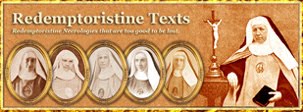
.jpg)









